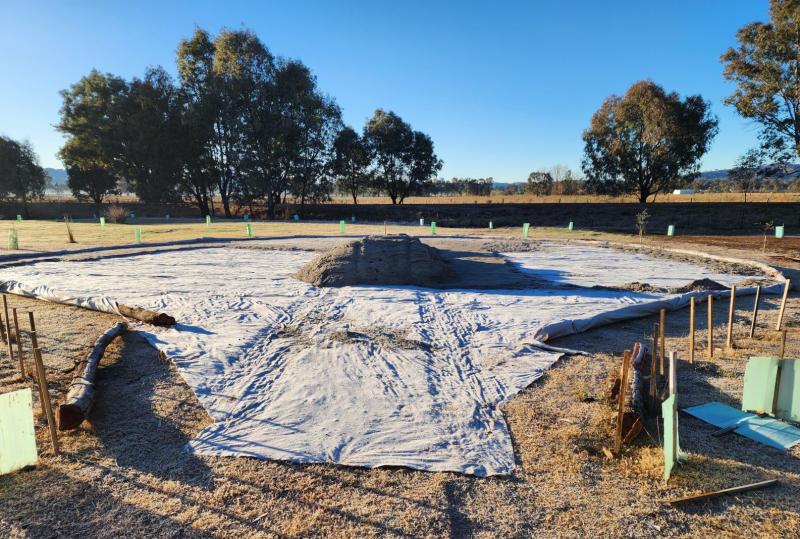A lot has been happening out at Ryans Lagoon over the winter months! Duduroa Dhargal Aboriginal Corporation (DDAC) continue to achieve their goals of traditional land management including weeding, burning, and planting; presenting to stakeholders; and creating spaces to practice traditional skills and pass on knowledge.
The area surrounding Ryans Lagoon was once used for grazing, and as a result, the native understorey was removed and weeds like Bathurst burr and thistles began taking over. As well as slashing, DDAC are managing the land through cultural burning, supported by the Country Fire Authority and Forest Fire Management Victoria, to reduce fuel load and better manage and protect the land so that native species can regenerate. It is hoped that in the future, native crops such as kangaroo grass can be planted and the grain harvested.
DDAC have also been ecologically thinning river red gum (Eucalyptus camaldulensis) saplings that began to spread across the wetland beds during the drier periods. The removal of this dense regrowth will allow the remaining saplings to have access to more resources and grow into healthier trees.

Another important factor at Ryans Lagoon is obviously the water – or lack thereof. The area of Ryans Lagoon Nature Conservation Reserve actually comprises two lagoons and a floodway that connects them to the Murray River via Ryans Creek. The operation of regulated water releases from Lake Hume has caused a disconnect between the Murray River and its floodplains, which impacts heavily on the health of wetlands such as Ryans Lagoon. However, there is a plan to provide what’s known as ‘environmental watering’ which allows for extra water to be released from Lake Hume to fill the lagoons in spring and then maintain water to a level over summer that supports native fish and other aquatic plants and animals.
In addition to all the land management, DDAC have also been building their capacity to survey and monitor native species. This has included sessions with La Trobe University and Turtles Albury Wodonga to learn about turtle nest monitoring and implementing a trial fox control program using quail eggs, as fox predation of turtle eggs is significant. Surveying of the endangered, winter-calling Sloane’s froglet (Crinia sloanei) continued over the cooler months, and aquatic monitoring has included eDNA (environmental DNA) water sampling to detect the potential presence of the flat-headed galaxias (Galaxias rostratus) which is critically endangered in NSW and vulnerable in VIC. And lastly, surveys with BirdLife Australia identified 50 different species using the wetlands.
The Learnscape circles are coming along nicely, with separate areas providing space for dancing, rock art, stone-knapping, and axe-grinding. Several workshops have already been held at the site, including traditional tool making and weaving as well as youth workshops with more to come!

The Traditional Land Management of Ryans Lagoon Wetlands program is supported by the Victorian Government through the Nature Fund – Caring for Country stream.






